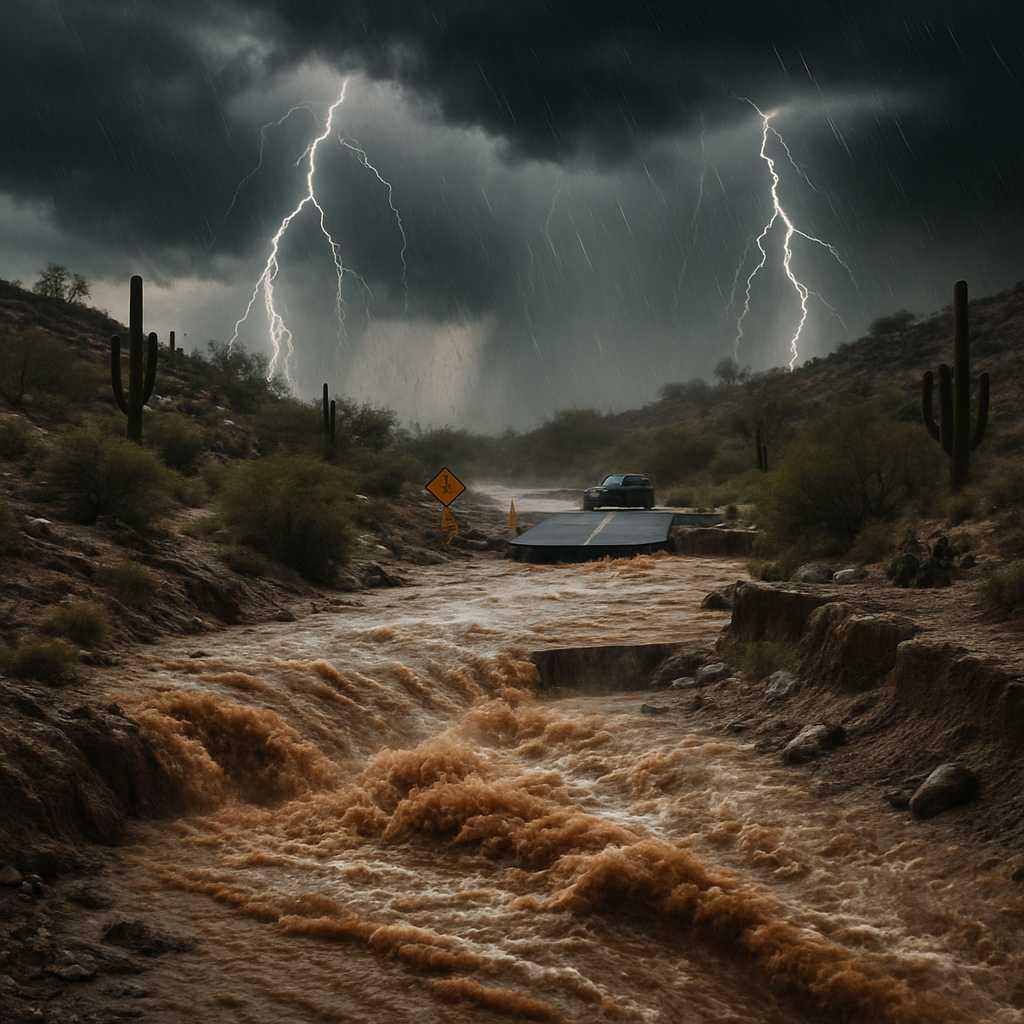Deserts are synonymous with scorching sun, parched landscapes, and rare rainfall. Yet, paradoxically, some of the most dramatic flash floods on Earth occur in these arid regions. As a meteorologist, I often encounter surprise when discussing the frequency and intensity of sudden floods in places like Arizona, Nevada, or northern Africa’s Sahara. Let’s explore how and why these flash floods form, their impact on communities, and crucial safety measures everyone should know.
How Do Flash Floods Form in Deserts?
Despite typically receiving less than 10 inches (25 cm) of rain a year, deserts can experience torrential downpours in just hours. Summer monsoon patterns or isolated thunderstorms, fueled by intense heat, dump high volumes of water in a short time. Dry desert soils, packed hard from long periods of drought, are almost impermeable. Instead of soaking in, rainwater rushes over land, gathering speed and volume along arroyos, canyons, and dry riverbeds—areas known locally as “washes.”
A single thunderstorm can bring enough rain to a small area to cause a wall of water several feet high to surge through a normally dry gulch. These rapid-onset floods catch both residents and visitors by surprise given their speed and unpredictability.
Human and Environmental Impacts
For desert communities, flash flooding is both a natural hazard and a reminder of nature’s power. Roads and bridges, often constructed across dry channels, are especially vulnerable. Flash floods can sweep cars off the pavement in seconds and erode infrastructure. Tragically, unsuspecting hikers and campers may not realize a storm miles away can send deadly waters hurtling downstream.
In August 2022, for example, Death Valley National Park received an entire year’s worth of rain in just three hours, washing out roads, stranding hundreds of visitors, and transforming the landscape overnight. Local residents, who depend on a fragile balance of water supply, soil, and infrastructure, can face disruptions that last for weeks.
On the positive side, flash floods temporarily recharge underground aquifers and replenish plant and animal life, which have adapted to survive—and sometimes thrive—in rare wet spells.
Safety Tips for Desert Flood Season
- Stay informed: During monsoon season or when storms are forecast, monitor local weather alerts.
- Never drive through flooded roads: Six inches of water can stall a car; a foot can sweep it away.
- Avoid camping or hiking in or near dry riverbeds—especially if rain is forecast anywhere upstream.
- Have an evacuation plan: Know the high ground and how to reach it quickly.
Final Thoughts
Flash floods in deserts are a vivid reminder that extreme weather can strike anywhere—even in the driest of places. Understanding the science behind these events, respecting their power, and staying alert are key to safety and resilience. By raising awareness and preparing wisely, communities and travelers alike can protect themselves from the desert’s rare but dramatic floods.
Stay safe, stay informed, and marvel at the dynamic forces shaping our planet—no matter where you are!
—Dusty


Leave a Reply